Dr. Mark Abbott
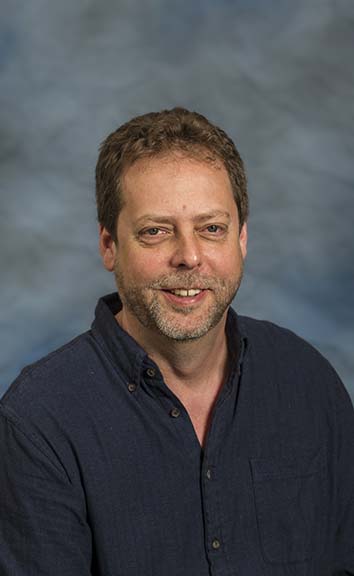 This was a fast paced year. There were a lot of logistics involved in co-leading with Don Rodbell from Union College a 2.5 month-long NSF-funded drilling project on Lake Junin in the Peruvian Andes recovering over 400 meters of sediments representing over a half million years of tropical climate change that includes multiple glacial-interglacial. Working with postdoc Darren Larsen we also recovered cores through lake ice from 80 meters of water from Jenny Lake, Grand Teton National Park for an NSF-funded project to investigate glacial history and earthquake reoccurrence. I am also happy to report that 2 PhD students and a postdoc from my lab obtained tenure track assistant professor positions. Aubrey Hillman defended her PhD thesis entitled “Lake Sediment Records Examining the Spatial and Temporal Connections of Human Activity and Climate Change in Southwestern China” and will start as an Assistant Professor at the University of Louisiana, Layette in January 2017 after completing her current postdoc fellowship with Dr. Lonnie Thompson at the Byrd Polar and Climate Research Center at Ohio State University. Matt Finkenbinder defended his Ph.D. entitled “Lake Sediment Records of Late-Quaternary Paleoclimate Change from Alaska and Newfoundland Developed Using Sedimentology and Geochemical Proxies” and started as an assistant professor at Wilkes University in the fall of 2016. Darren Larsen spent 2.5 years as a postdoc at Pitt and started as an Assistant Professor at Occidental College this fall.
This was a fast paced year. There were a lot of logistics involved in co-leading with Don Rodbell from Union College a 2.5 month-long NSF-funded drilling project on Lake Junin in the Peruvian Andes recovering over 400 meters of sediments representing over a half million years of tropical climate change that includes multiple glacial-interglacial. Working with postdoc Darren Larsen we also recovered cores through lake ice from 80 meters of water from Jenny Lake, Grand Teton National Park for an NSF-funded project to investigate glacial history and earthquake reoccurrence. I am also happy to report that 2 PhD students and a postdoc from my lab obtained tenure track assistant professor positions. Aubrey Hillman defended her PhD thesis entitled “Lake Sediment Records Examining the Spatial and Temporal Connections of Human Activity and Climate Change in Southwestern China” and will start as an Assistant Professor at the University of Louisiana, Layette in January 2017 after completing her current postdoc fellowship with Dr. Lonnie Thompson at the Byrd Polar and Climate Research Center at Ohio State University. Matt Finkenbinder defended his Ph.D. entitled “Lake Sediment Records of Late-Quaternary Paleoclimate Change from Alaska and Newfoundland Developed Using Sedimentology and Geochemical Proxies” and started as an assistant professor at Wilkes University in the fall of 2016. Darren Larsen spent 2.5 years as a postdoc at Pitt and started as an Assistant Professor at Occidental College this fall.
Please view Dr. Mark Abbott's Field Photos.
Dr. Daniel Bain
 It has been another successful year in Daniel Bain’s lab. Krissy Hopkins landed a research scientist job with the USGS’s Eastern Geographic Science Center at the Reston, VA headquarters. Rob Rossi and Erin Pfeil-McCullough both saw their first article in publication and both plan to defend their dissertation research this summer. Angela Mullins joined the group in September and started to characterize the water chemistry in and around green infrastructure in Pittsburgh. This is part of our continued research in collaboration with the Pittsburgh Parks Conservancy to assess the effectiveness of best management practices developed elsewhere when they are installed in Pittsburgh’s challenging landscape. Sarah Lavin defended her Master’s thesis last summer, characterizing soil moisture conditions as part of the same project. In addition, Tyler Paulina defended his undergraduate thesis in December, looking at surface water-ground water interactions in a Pittsburgh stream. Finally I was lucky enough to be serving as one of the University’s sustainability fellows for the year. We love visitors, so don’t be a stranger.
It has been another successful year in Daniel Bain’s lab. Krissy Hopkins landed a research scientist job with the USGS’s Eastern Geographic Science Center at the Reston, VA headquarters. Rob Rossi and Erin Pfeil-McCullough both saw their first article in publication and both plan to defend their dissertation research this summer. Angela Mullins joined the group in September and started to characterize the water chemistry in and around green infrastructure in Pittsburgh. This is part of our continued research in collaboration with the Pittsburgh Parks Conservancy to assess the effectiveness of best management practices developed elsewhere when they are installed in Pittsburgh’s challenging landscape. Sarah Lavin defended her Master’s thesis last summer, characterizing soil moisture conditions as part of the same project. In addition, Tyler Paulina defended his undergraduate thesis in December, looking at surface water-ground water interactions in a Pittsburgh stream. Finally I was lucky enough to be serving as one of the University’s sustainability fellows for the year. We love visitors, so don’t be a stranger.
Dr. Rosemary Capo
 First year Ph.D. student and Whittington Fellow Irene Wallrich began field and lab work related to acid mine drainage remediation and received an Honorable Mention for her NSF Graduate Student Research Fellowship proposal. Her work will continue our group’s collaboration with Adjunct Faculty member Bob Hedin of Hedin Environmental. Research with Brian Stewart and postdoc Thai Phan related to unconventional shale gas geochemistry culminated in a special volume of Applied Geochemistry (Stewart, B.W., Capo, R.C., Kirby, C.S. Geochemistry of unconventional shale gas from formation to extraction: Petrogenesis, hydraulic fracturing, and environmental impacts (Preface). Applied Geochemistry vol. 60, 1-2, 2015). Continued collaboration with NETL, including Adjunct Faculty member Ale Hakala in the area of carbon sequestration involves former student James Gardiner, now an NETL postdoc. Matt Dieterich followed up his MS with an internship at Mt. Rainier National Park as part of their Geoscientist-in-the-Park program. While there, he took a photograph selected as the image for a US Postal Service Forever stamp celebrating the National Park Service’s Centennial (http://about.usps.com/news/national-releases/2016/pr16_029.htm).
First year Ph.D. student and Whittington Fellow Irene Wallrich began field and lab work related to acid mine drainage remediation and received an Honorable Mention for her NSF Graduate Student Research Fellowship proposal. Her work will continue our group’s collaboration with Adjunct Faculty member Bob Hedin of Hedin Environmental. Research with Brian Stewart and postdoc Thai Phan related to unconventional shale gas geochemistry culminated in a special volume of Applied Geochemistry (Stewart, B.W., Capo, R.C., Kirby, C.S. Geochemistry of unconventional shale gas from formation to extraction: Petrogenesis, hydraulic fracturing, and environmental impacts (Preface). Applied Geochemistry vol. 60, 1-2, 2015). Continued collaboration with NETL, including Adjunct Faculty member Ale Hakala in the area of carbon sequestration involves former student James Gardiner, now an NETL postdoc. Matt Dieterich followed up his MS with an internship at Mt. Rainier National Park as part of their Geoscientist-in-the-Park program. While there, he took a photograph selected as the image for a US Postal Service Forever stamp celebrating the National Park Service’s Centennial (http://about.usps.com/news/national-releases/2016/pr16_029.htm).
Our undergraduates have been busy as well -- Emily Burt is now a graduate student at the University of Southern California. Miranda DiFasio graduated this spring (BA, Environmental Studies); she expanded a GIS database to incorporate field and chemical parameters for streams in the Allegheny River watershed and helped train new undergraduates Elizabeth Mahoney, Corinne Hite and Victoria Walker. Anna Thornton is a junior (BS Geology) who will continue work on the effects of anthropogenic inputs to Allegheny River watershed stream chemistry.
Mark Collins
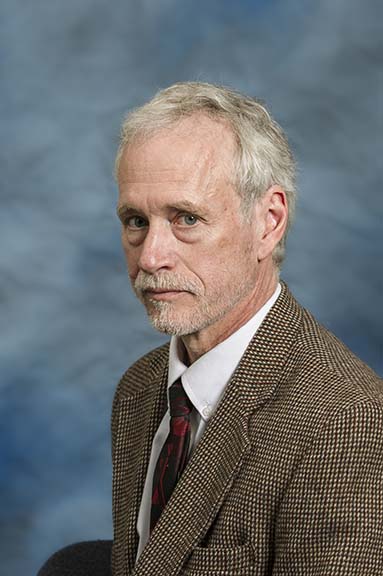 It has been an active few years for the Environmental Studies program. Enrollment numbers have remained steady, and alumni continue to work in a diversity of disciplines and occupations. The major currently numbers ~90 students who take required courses from eight departments among three schools.
It has been an active few years for the Environmental Studies program. Enrollment numbers have remained steady, and alumni continue to work in a diversity of disciplines and occupations. The major currently numbers ~90 students who take required courses from eight departments among three schools.
On a national level, two environmental studies students were honored this year. Keely McCaskie (A&S '13) won a Fulbright grant, and Katherine "Nikki" Luke (A&S '14) won both a Fulbright and a Morris K. Udall scholarship.
Environmental Studies students were also heavily involved in campus activities. Several ES majors worked with the University's food-services vendor, Sodexho, to drastically reduce the number of plastic bags used on campus, and the student-run Plant 2 Plate urban farm grew produce for local food banks. In addition, ES seniors Russell Thorsen and Nicholas Rubenstein were part of the winning team in Pitt's 2015 Sustainable Solutions Competition. Their student-designed, student-run project replaced foliage along O’Hara Street with a native plant landscape that is both aesthetically pleasing and provides a functional education resource.
In AY 2014-15, the University also signed on to the Real Food Campus Commitment, where colleges and universities pledge to buy at least 20 percent real food annually by 2020 and thereby use their tremendous purchasing power to support a healthy food system that strengthens local economies, respects human rights, ensures ecological sustainability, and facilitates community involvement and education. Pitt's Real Food Challenge is spearheaded by senior ES major Anna Greenberg.
On a personal note, this is my last time writing to you as advisor and coordinator of the Environmental Studies Program. Beginning next year, I will be working half-time as a teacher and as the department's internship coordinator. Dr. Danielle Andrews will be the new advisor and program coordinator, and by all indications seems like an excellent choice.
At the risk of breaking my own rules against using clichés, it has been an honor and privilege to serve Environmental Studies students for the past 17 years. The department—including chairs Bud Rollins, Tom Anderson, Brian Stewart, Bill Harbert and Mark Abbott; all faculty members, most notably Rose Capo and Charlie Jones, plus Emily Elliott, Dan Bain, Nadine McQuarrie, Mike Ramsey and Joe Werne; adjuncts extraordinaire Don Hopey, Ward Allebach, Del Kubeldis, Jason Berry and Emily Collins; and the excellent staff of Mat Romick, Dolly Chavez, Annemarie Vranesevic, Deanna Hitchcock, Candy Weller, Lorrie Robbins and Shannon Granahan—have been unfailingly patient and instrumental witnesses to both successes and recoveries.
However, it is the students who make this program. (This is not a cliché.) While the hiccups have been mercifully few, they have been entirely my fault; the countless accomplishments are entirely yours and yours alone. I very much hope we can keep in touch.
One final note: Wayward Tracks, a book of poems and essays, is available through www.inextensopress.com, or through the International Distribution Centre (the trunk of my '94 Toyota).
Dr. Emily Elliott
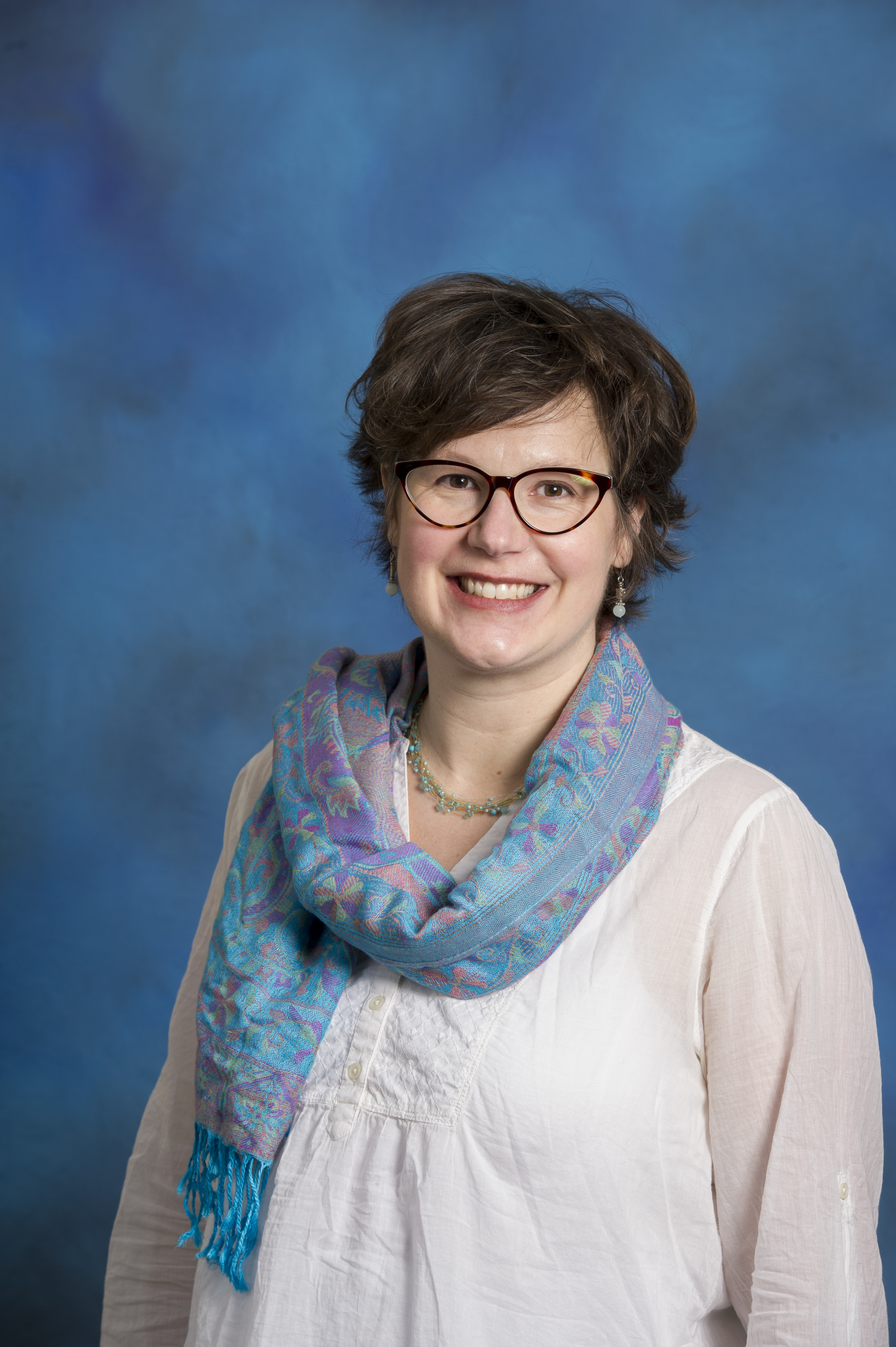 The Elliott Biogeochemistry research group continued research on the air-water-ecosystem interactions of nitrogen. PhD alum, Dr. Lucy Rose published a paper in Ecosystems on her dissertation research. She also was first author on a synthesis paper published in Water Resources Research that stemmed from the Joint U.S.-Japan Conference on Catchment Hydrology. PhD alum, Dr. David Felix started a tenure-track job and published another paper in Atmospheric Environment. The group coalesced around 2nd and 3rd year graduate students Justin Coughlin, Kassia Groszewski and Zhongjie Yu. Justin’s research is the first to explicitly model and measure the impact of Marcellus Shale extraction activities on landscape reactive nitrogen deposition. Zhongjie Yu has successfully constructed and tested a dynamic flux chamber for soil nitric oxide measurements and is ready to go prime time with his field work. Kassia Groszewski perfected a new system for passive collection of two key nitrogen species in wet and dry deposition using resin columns. She is deploying these throughout Pittsburgh for comparison with background measurements at rural sites to examine additional nitrogen deposition fluxes in urban systems. Zhongjie Yu was awarded a Mellon Fellowship, while Kassia and Zhongjie were both awarded Leighton Memorial Scholarships. Undergraduate researcher Troy Ferland defended his undergraduate thesis and enrolled as a graduate student in GES. We welcomed new undergraduate researcher and Brackenridge Fellow, Madeline Grey, to our group. Katie Redling, manager of the Regional Stable Isotope Laboratory for Earth and Environmental Science has kept us busy with thousands of new data points. In 2015, Dr. Elliott gave a keynote address at the 9th International Conference on Acidic Deposition. She was an invited speaker and panelist for the Third Annual Kent State University Water Symposium in October. She also was invited to join the Science Ambassador Program of the National Academies of Science and Engineering.
The Elliott Biogeochemistry research group continued research on the air-water-ecosystem interactions of nitrogen. PhD alum, Dr. Lucy Rose published a paper in Ecosystems on her dissertation research. She also was first author on a synthesis paper published in Water Resources Research that stemmed from the Joint U.S.-Japan Conference on Catchment Hydrology. PhD alum, Dr. David Felix started a tenure-track job and published another paper in Atmospheric Environment. The group coalesced around 2nd and 3rd year graduate students Justin Coughlin, Kassia Groszewski and Zhongjie Yu. Justin’s research is the first to explicitly model and measure the impact of Marcellus Shale extraction activities on landscape reactive nitrogen deposition. Zhongjie Yu has successfully constructed and tested a dynamic flux chamber for soil nitric oxide measurements and is ready to go prime time with his field work. Kassia Groszewski perfected a new system for passive collection of two key nitrogen species in wet and dry deposition using resin columns. She is deploying these throughout Pittsburgh for comparison with background measurements at rural sites to examine additional nitrogen deposition fluxes in urban systems. Zhongjie Yu was awarded a Mellon Fellowship, while Kassia and Zhongjie were both awarded Leighton Memorial Scholarships. Undergraduate researcher Troy Ferland defended his undergraduate thesis and enrolled as a graduate student in GES. We welcomed new undergraduate researcher and Brackenridge Fellow, Madeline Grey, to our group. Katie Redling, manager of the Regional Stable Isotope Laboratory for Earth and Environmental Science has kept us busy with thousands of new data points. In 2015, Dr. Elliott gave a keynote address at the 9th International Conference on Acidic Deposition. She was an invited speaker and panelist for the Third Annual Kent State University Water Symposium in October. She also was invited to join the Science Ambassador Program of the National Academies of Science and Engineering.
View Dr. Emily Elliott's Field Photos.
Dr. William Harbert
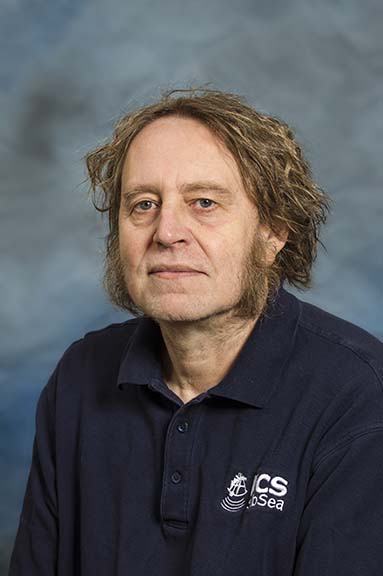 Geophysics: Advanced subsurface imaging using reflection, vertical seismic profiling, and cross well tomography geophysical methods
Geophysics: Advanced subsurface imaging using reflection, vertical seismic profiling, and cross well tomography geophysical methods
Microseismic Methods: Advanced analysis of subsurface systems using microseismic data utilizing b-value and moment magnitude based calculations
Well Log Analysis and Interpretation: Advanced petrophysical analysis using geophysical wire line well logs and advanced workflows.
Electromagnetic Geophysics: Use multi frequency airborne and helicopter borne electromagnetic geophysics to determine subsurface water quality and topology of water systems.
Magnetics: Use magnetic potential field for determination of well and borehole related features.
Cement Stability and Tectonics: Model petrophysical properties of cement and foam cement relative to formation containment and well bore stability. Use 3D stress models to determine induced seismicity potential and fluid flow potential through fracture of fault systems.
During this review period Richard Spaulding and Erich Zorn completed their MS and Ph.D. degrees respectively Rick and Erich each did a tremendous job in their geophysical research and have been successful in continuing to work in the areas of petrophysics and geophysics respectively. Numerous Pro-MS graduate students successfully completed their MS degrees and are working in a variety of fascinating and challenging new jobs. I wish them the very best of success in their new endeavors!
Please view Dr. Harbert's Field Photos.
Dr. Charlie Jones
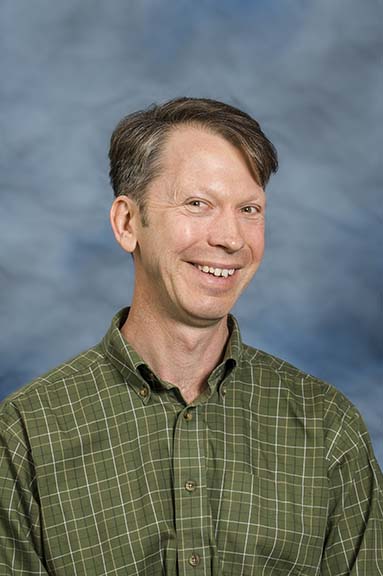 The last few years have been extremely busy in the geology and environmental geology programs. We reached 100 B.S. majors, and last summer we graduated 20 students, a new record since I got here. I think these numbers are part of a national trend, since the last two or three years were the first times that I’d seen students having difficulties finding room in a summer field camp. Fortunately, I think things are beginning to calm down a bit.
The last few years have been extremely busy in the geology and environmental geology programs. We reached 100 B.S. majors, and last summer we graduated 20 students, a new record since I got here. I think these numbers are part of a national trend, since the last two or three years were the first times that I’d seen students having difficulties finding room in a summer field camp. Fortunately, I think things are beginning to calm down a bit.
In other news, you have no doubt read elsewhere in this letter that we’ve started a new environmental science major. As a result, we are now phasing out the environmental geology degree. It was always too similar to the geology degree, so this change should not hurt our students.
In other news, I am continuing my streak of bad weather on field trips. It rained all day Saturday (until precisely 5 pm) on the most recent Sed-Strat field trip to the State College area. The year before on this trip we cycled from sun to rain to sleet to snow every 45 minutes or so. Plus, we got to hear some thunder during one of the snow events. Snow thunder! We were treated to heavy snow while we set up our tents, and another snow squall as we took them back down in the morning. Of course, this mid-October snow was restricted to just the small area we were in, and it was the only snow to fall on us until mid December. What luck!
The history of the Earth field trip featured some cold high winds, which were much appreciated on the metal tower overlooking the Gettysburg battlefield. What was most special about last spring’s trip, however, was an unusually large number of odd sightings that students native to central Pennsylvania said were typical of the region. My favorite sighting is featured in this photograph.
Dr. Nadine McQuarrie
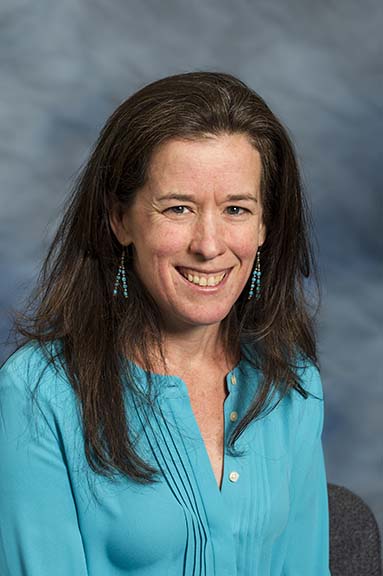 Our group continues to explore the relationship between the geometry of faults, their rate and age and the cooling history of rocks as expressed in thermochronometer ages. We recently acquired a NSF grant to evaluate this in the Nepal Himalaya—the site of the devastating 2015 Earthquake. Our goal is to better delineate the size and geometry of the fault plane that potentially can rupture in future Earthquakes. We have continued our work evaluating fault geometry using balanced cross sections across the Bhutan Himalaya, the Central Andes and the Island of Timor. We have shown that the geometry of faults have the largest influence on the predicted cooling ages. The location of faults control the vertical uplift of rocks and the location of focused erosion.
Our group continues to explore the relationship between the geometry of faults, their rate and age and the cooling history of rocks as expressed in thermochronometer ages. We recently acquired a NSF grant to evaluate this in the Nepal Himalaya—the site of the devastating 2015 Earthquake. Our goal is to better delineate the size and geometry of the fault plane that potentially can rupture in future Earthquakes. We have continued our work evaluating fault geometry using balanced cross sections across the Bhutan Himalaya, the Central Andes and the Island of Timor. We have shown that the geometry of faults have the largest influence on the predicted cooling ages. The location of faults control the vertical uplift of rocks and the location of focused erosion.
View Dr. Nadine McQuarrie's Field Photos.
Dr. Michael Ramsey
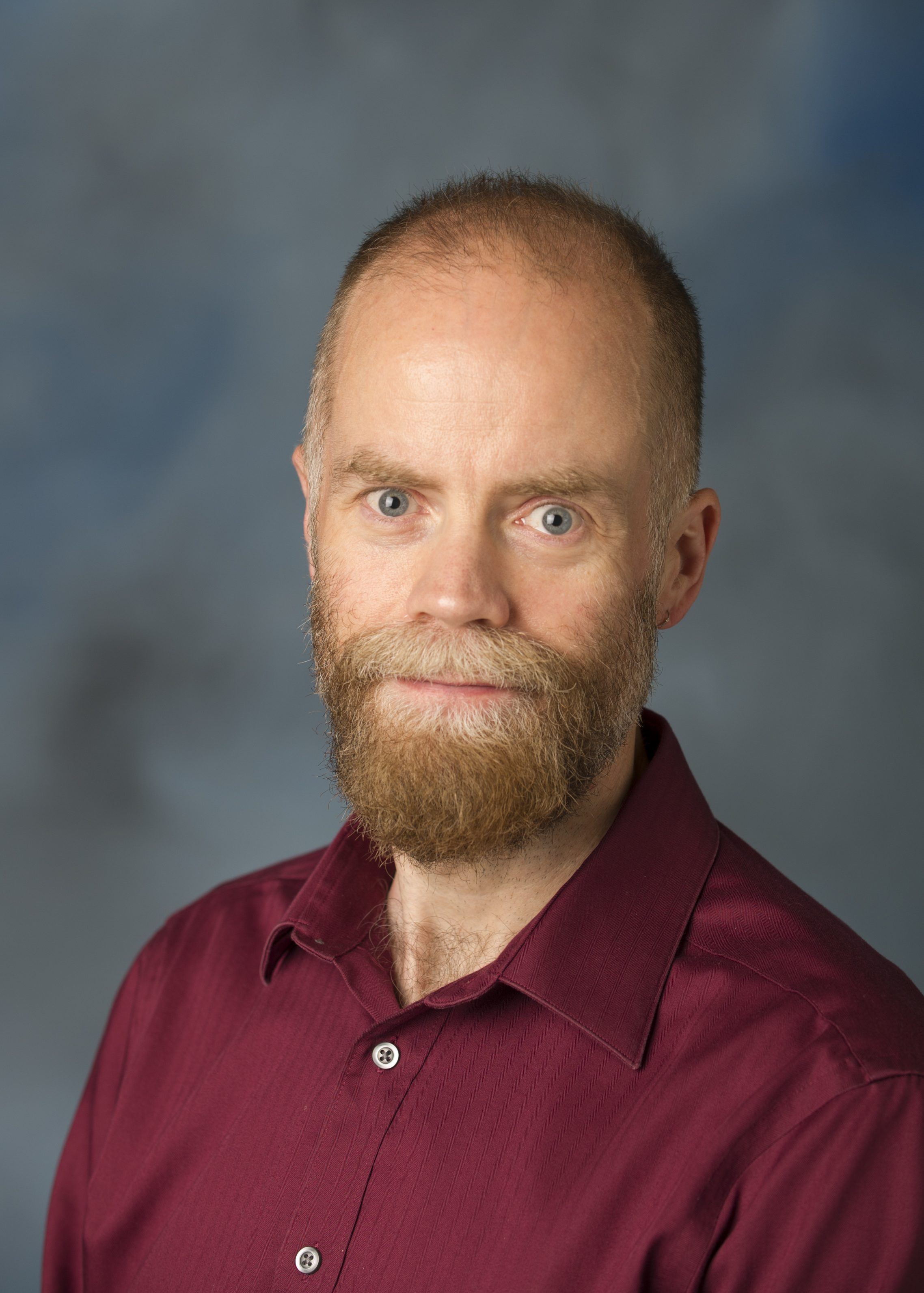 The major research accomplishment during the past year was the submission of a $168M NASA mission proposal, which was the largest ever submitted by the University of Pittsburgh. Although still in the review stage, if selected, it would last 8-9 years and culminate in the building/launching of an Earth-orbiting satellite. This satellite mission would contain the next generation thermal infrared imaging instrument designed to quantify the amount of climatologically-active gases being emitted by all the active volcanoes globally. The data would also be used to map land and sea temperatures elsewhere on the planet. This proposal was a major effort between the University of Pittsburgh, Arizona State University, the Southwest Research Institute (SwRI) and the members of the science team who represent over a dozen other institutions worldwide.
The major research accomplishment during the past year was the submission of a $168M NASA mission proposal, which was the largest ever submitted by the University of Pittsburgh. Although still in the review stage, if selected, it would last 8-9 years and culminate in the building/launching of an Earth-orbiting satellite. This satellite mission would contain the next generation thermal infrared imaging instrument designed to quantify the amount of climatologically-active gases being emitted by all the active volcanoes globally. The data would also be used to map land and sea temperatures elsewhere on the planet. This proposal was a major effort between the University of Pittsburgh, Arizona State University, the Southwest Research Institute (SwRI) and the members of the science team who represent over a dozen other institutions worldwide.
A second aspect of my research involves funding from NASA, NSF and NGS to explore the physical and infrared spectral properties of lava flows on Earth and other planets. This funding supports my laboratory, several field campaigns per year, a postdoctoral researcher and four-five graduate students. We seek to probe the petrology and structure of the lava as well as the effect it may have on both the cooling rate and hazard implications. The long-term funding from both agencies has allowed me to create new laboratory- and field-based equipment that have been vital in the research of my graduate students over the past several years. This research has been highly successful resulting in several new proposals being funded and 11 published papers in the past 18 months and a record 11 papers being published during this review period! Finally, during the past year, two of my graduate students (Janine Krippner and Daniel Williams) were both awarded renewals for their NASA Earth and Space Science Fellowships in the amount of $30,000 each.
Please view Dr. Ramsey's Field Photos.
Dr. Eitan Shelef
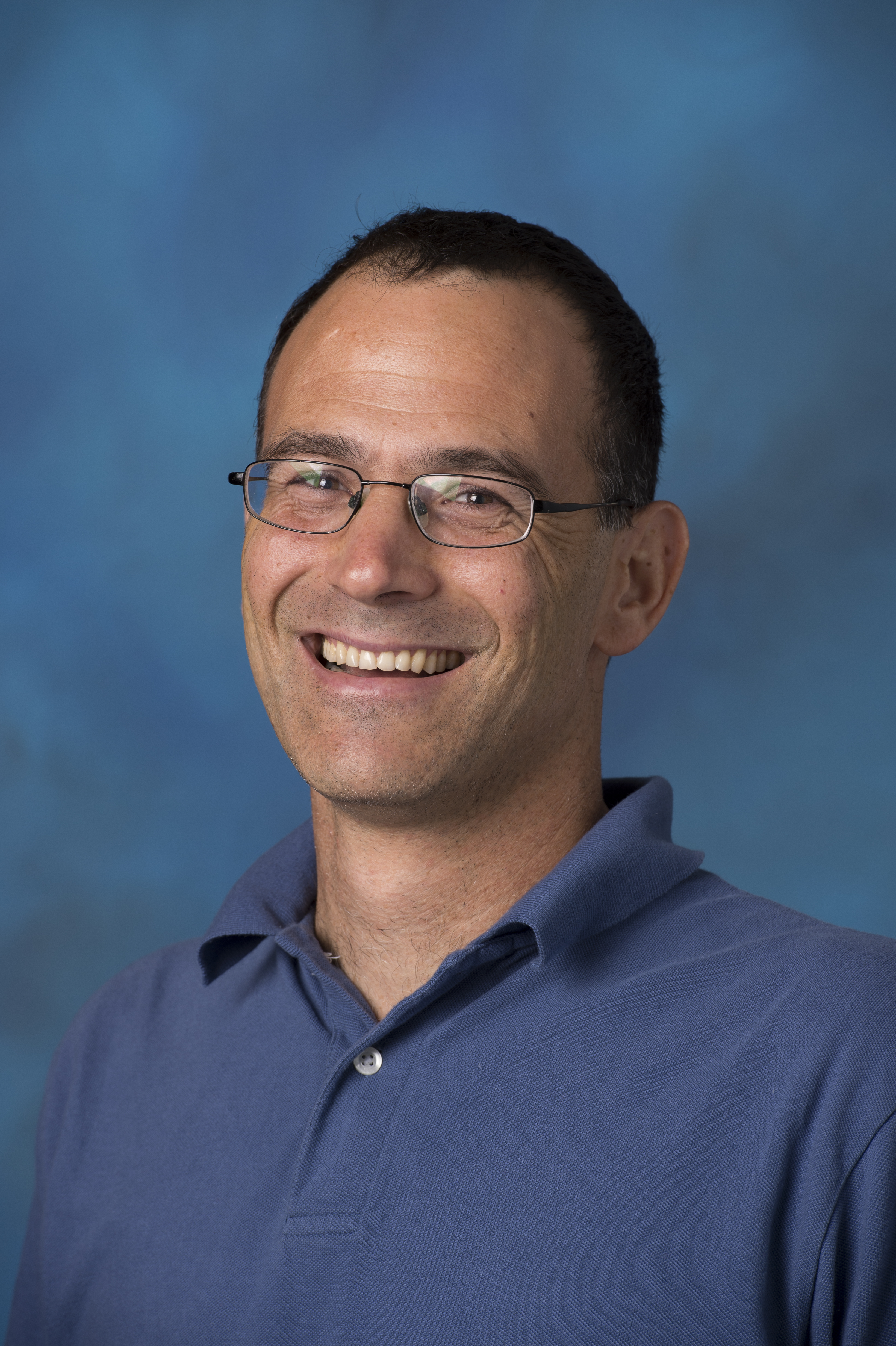 In the past year I developed geomorphologic methods to quantify the mass and erosion of Soil Organic Carbon (SOC) in floodplain to improve global climate models, and also explored the geomorphic processes that cause the up slope recession of oversteepend river segments (knick points) to test models of knick point recession. In exploring the extent of floodplain, I developed, in collaboration with Joel Rowland and Jordan Muss of Los Alamos National laboratory, a method for mapping the extent of these deposits from Digital Elevation Models (DEMs). This mapping facilitates quantification of SOC mass in floodplain deposits. To quantify the mass of floodplain SOC that is consumed by river bank erosion, we also developed a method for quantifying the extent of river banks within floodplain deposits. In exploring the process of knick point recession, I found, together with Itai Haviv and Liran Goren of Ben Gurion University, that the recession of vertical knick points is likely enslaved to the recession of non-vertical channel sections down slope of the knick point. This suggests that channel evolution models, originally formulated for non-vertical knick points, can also model the development of landscapes where vertical knick points are common.
In the past year I developed geomorphologic methods to quantify the mass and erosion of Soil Organic Carbon (SOC) in floodplain to improve global climate models, and also explored the geomorphic processes that cause the up slope recession of oversteepend river segments (knick points) to test models of knick point recession. In exploring the extent of floodplain, I developed, in collaboration with Joel Rowland and Jordan Muss of Los Alamos National laboratory, a method for mapping the extent of these deposits from Digital Elevation Models (DEMs). This mapping facilitates quantification of SOC mass in floodplain deposits. To quantify the mass of floodplain SOC that is consumed by river bank erosion, we also developed a method for quantifying the extent of river banks within floodplain deposits. In exploring the process of knick point recession, I found, together with Itai Haviv and Liran Goren of Ben Gurion University, that the recession of vertical knick points is likely enslaved to the recession of non-vertical channel sections down slope of the knick point. This suggests that channel evolution models, originally formulated for non-vertical knick points, can also model the development of landscapes where vertical knick points are common.
View Dr. Eitan Shelef's Field Photos.
Dr. Brian Stewart
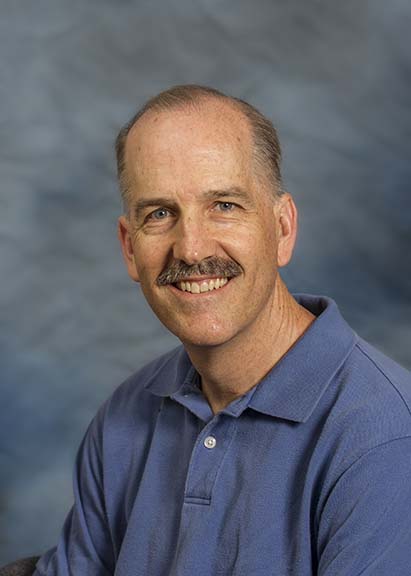 The work carried out by our research group on shale gas extraction has continued to garner interest, even as we move toward more fundamental questions about marine depositional systems, diagenetic recrystallization, and subsurface high-temperature fluid flow. Graduate students Justin Mackey, Zachary Tieman and Monica McGrath are carrying out excellent work on different aspects of these questions, not only in marine sediments but also in metasomatic mineral deposits. PostDoc, Thai Phan, continues to interface between NETL and our lab, and contributes to all of these projects. In other areas, we are working to apply our lithium isotope expertise to understand weathering and depositional systems in the terrestrial environment, while developing new isotope systems using our thermal ionization mass spectrometer and the NETL Neptune multicollector ICP-MS. I have also been working with Professor Capo as she (and her student Irene Wallrich) revisit acid mine drainage systems and explore possible ways to remediate and recycle precipitates form passive treatment systems. Through all of this, we have been lucky to have talented undergraduates working in our lab, including Miranda Difonso, Elizabeth Mahoney, Anna Thornton, Ed Schneider, and Corinne Hite.
The work carried out by our research group on shale gas extraction has continued to garner interest, even as we move toward more fundamental questions about marine depositional systems, diagenetic recrystallization, and subsurface high-temperature fluid flow. Graduate students Justin Mackey, Zachary Tieman and Monica McGrath are carrying out excellent work on different aspects of these questions, not only in marine sediments but also in metasomatic mineral deposits. PostDoc, Thai Phan, continues to interface between NETL and our lab, and contributes to all of these projects. In other areas, we are working to apply our lithium isotope expertise to understand weathering and depositional systems in the terrestrial environment, while developing new isotope systems using our thermal ionization mass spectrometer and the NETL Neptune multicollector ICP-MS. I have also been working with Professor Capo as she (and her student Irene Wallrich) revisit acid mine drainage systems and explore possible ways to remediate and recycle precipitates form passive treatment systems. Through all of this, we have been lucky to have talented undergraduates working in our lab, including Miranda Difonso, Elizabeth Mahoney, Anna Thornton, Ed Schneider, and Corinne Hite.
Dr. Brian Thomas
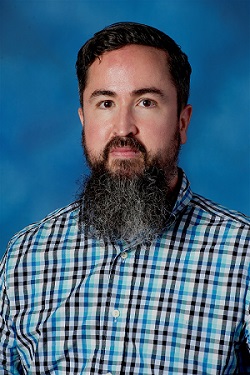 Dr. Thomas' research is focused on understanding the role of groundwater processes and watershed storage in surface water behaviors as a result of the convolution of climate and anthropogenic influences. His research addresses (1) the role of subsurface storage impacts in low flow behaviors, (2) sustainable groundwater management using historical observations and (3) assessing groundwater recharge behaviors, altered as a result of precipitation intensity changes. In his research, Dr. Thomas uses a combination of field methods, statistical application, remote sensing and hydrological modeling.
Dr. Thomas' research is focused on understanding the role of groundwater processes and watershed storage in surface water behaviors as a result of the convolution of climate and anthropogenic influences. His research addresses (1) the role of subsurface storage impacts in low flow behaviors, (2) sustainable groundwater management using historical observations and (3) assessing groundwater recharge behaviors, altered as a result of precipitation intensity changes. In his research, Dr. Thomas uses a combination of field methods, statistical application, remote sensing and hydrological modeling.
Brian received his Ph.D. in Civil Engineering from Tufts University and an M.S. in Hydrology from the University of New Hampshire. Prior to his Ph.D., he worked for several years in consulting as a senior hydrogeologist in Massachusetts. His B.S. is from the University of North Dakota in Environmental Geology and Technology. His interest in groundwater started from an early age as a result of water quality and quantity issues spurred by extensive irrigation practices in North Dakota, where he was born and raised. Brian is looking forward to being in Pittsburgh and cheering against the Penguins.
Please view Dr. Brian Thomas' Field Photos.
Dr. Josef Werne
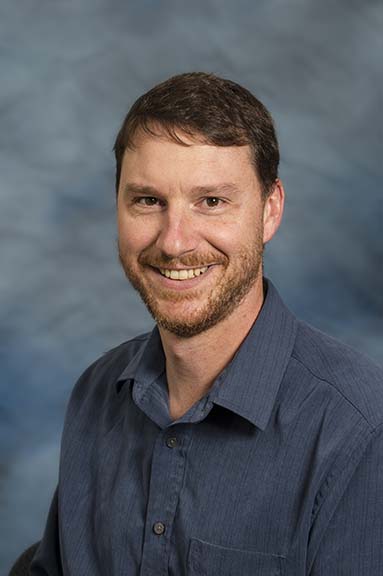 This year my research group in Organic and Stable Isotope (Paleo)Biogeochemistry had several major accomplishments. We received funding for and initiated a new NSF-supported multi-disciplinary collaborative project (with M. Abbott in GES and E. Arkush in Archaeology) utilizing new biomarker and isotope proxies to reconstruct climate and human populations in the Titicaca Basin. My group (including graduate and undergraduate students) also conducted field work for multiple externally funded projects (NSF & ICDP funding) in three countries, Canada, Mexico, and the USA. We sampled Lake Mahoney, British Columbia and Fayetteville Green Lake, New York for a NSF-funded biogeochemical study of organic and inorganic sulfur cycling in the water column and sediments of these sulfidic lakes, which are considered analogs for the ocean on early Earth. We also participated in MexiDrill, a major multi-institutional project funded by NSF and ICDP (the International Continental Drilling Program) to retrieve a sediment core from Lake Chalco, just outside Mexico City. We retrieved over a kilometer of core total, with three cores to a maximum depth of just over 500 meters, this likely represents more than half a million years of deposition, which could provide one of the longest continuous records of paleoclimate and environmental change in North America.
This year my research group in Organic and Stable Isotope (Paleo)Biogeochemistry had several major accomplishments. We received funding for and initiated a new NSF-supported multi-disciplinary collaborative project (with M. Abbott in GES and E. Arkush in Archaeology) utilizing new biomarker and isotope proxies to reconstruct climate and human populations in the Titicaca Basin. My group (including graduate and undergraduate students) also conducted field work for multiple externally funded projects (NSF & ICDP funding) in three countries, Canada, Mexico, and the USA. We sampled Lake Mahoney, British Columbia and Fayetteville Green Lake, New York for a NSF-funded biogeochemical study of organic and inorganic sulfur cycling in the water column and sediments of these sulfidic lakes, which are considered analogs for the ocean on early Earth. We also participated in MexiDrill, a major multi-institutional project funded by NSF and ICDP (the International Continental Drilling Program) to retrieve a sediment core from Lake Chalco, just outside Mexico City. We retrieved over a kilometer of core total, with three cores to a maximum depth of just over 500 meters, this likely represents more than half a million years of deposition, which could provide one of the longest continuous records of paleoclimate and environmental change in North America.
Please view Dr. Josef Werne's Field Photos.
Dr. Kyle Whittinghill
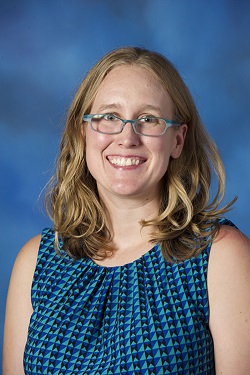 Dr. Kyle Whittinghill received her Ph.D. in Soil Sciences from the University of Minnesota department of Ecology, Evolution, and Behavior. Prior to that she graduated from Middlebury College with a degree in Biology and minors in Chemistry and Mathematics. Since defending her dissertation, Dr. Whittinghill completed postdoctoral research projects at the University of Michigan and the University of New Hampshire. Dr. Whittinghill’s research focuses on how soil and sediment processes in terrestrial and aquatic ecosystems affect watershed carbon and nutrient cycling. She uses biogeochemical models supported by laboratory and field work to examine how global environmental change alters biogeochemistry at plot, local and regional scales. Dr. Whittinghill has spent the last three years teaching Ecology, Environmental Science, and Statistics at St. Olaf College and Colorado College. She is excited about moving back to Pennsylvania where she spent five years as a child and exploring the Allegheny Mountains.
Dr. Kyle Whittinghill received her Ph.D. in Soil Sciences from the University of Minnesota department of Ecology, Evolution, and Behavior. Prior to that she graduated from Middlebury College with a degree in Biology and minors in Chemistry and Mathematics. Since defending her dissertation, Dr. Whittinghill completed postdoctoral research projects at the University of Michigan and the University of New Hampshire. Dr. Whittinghill’s research focuses on how soil and sediment processes in terrestrial and aquatic ecosystems affect watershed carbon and nutrient cycling. She uses biogeochemical models supported by laboratory and field work to examine how global environmental change alters biogeochemistry at plot, local and regional scales. Dr. Whittinghill has spent the last three years teaching Ecology, Environmental Science, and Statistics at St. Olaf College and Colorado College. She is excited about moving back to Pennsylvania where she spent five years as a child and exploring the Allegheny Mountains.
Dr. Shawn Wright
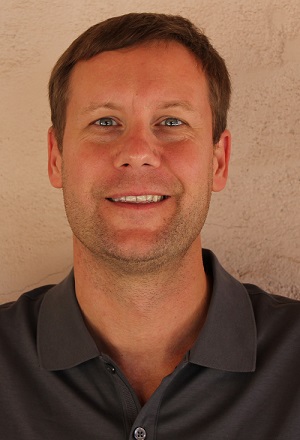 Since Shawn has joined the Department of Geology and Environmental Science he has proposed the following grants: From the NASA program "Topical Workshops, Conference, and Symposia", Wright received funds for a pre-conference workshop and several field trips during the July 2017 Annual Meeting of the Meteoritical Society. The grant is titled "Assembling Evidence of Impact at Highly Deformed Impact Craters: A Workshop with Field Trips to the Santa Fe Impact Structure, New Mexico".
Since Shawn has joined the Department of Geology and Environmental Science he has proposed the following grants: From the NASA program "Topical Workshops, Conference, and Symposia", Wright received funds for a pre-conference workshop and several field trips during the July 2017 Annual Meeting of the Meteoritical Society. The grant is titled "Assembling Evidence of Impact at Highly Deformed Impact Craters: A Workshop with Field Trips to the Santa Fe Impact Structure, New Mexico".
From the NASA program Planetary Geology and Geophysics, Wright reconciles sample, field, and remote data of altered and shocked basalts through September 2018 with a grant titled "Alteration trends in a full range of shocked basalt: Comparison to unshocked basalts and ejecta localities from field and remote mapping".